




| Meadow Grasshopper (Pseudochorthippus parallelus (Zetterstedt, 1821)) |





|
|
Scientific name: Pseudochorthippus parallelus (Zetterstedt, 1821) Common name: Meadow Grasshopper French name: Criquet des pâtures Order: Orthoptera Family: Acrididae Wingspan : Male: 13-16 mm. Female: 23-25 mm. Biotope: Any grassy area excepted dry locations. Meadows, road sides, parks and gardens. Geographic area: Europe east to the Ural, North Africa. Observation period : June to October. |
You can recognize the grasshoppers of the Chorthippus and related genera by the presence of a small lobe on the outer edge of the elytra or tegmina, near the base. The side-keels on the upper side of the Meadow Grasshopper's pronotum are almost straight (not angulous) and parallels. This is the origin of the scientific name of this species. The general colour is green but can sometimes be brown, yellow or purple. The antennae are filiform and do not become thick at the apex with a club-shaped tip. The elytra reach or slightly exceed the abdomen length on males. They are very short and do not extend after the third tergite on females. The wings are much shorter than the elytra on both sexes. The knees on the hind leg femora are black. There are other species in the Chorthippus, Pseudochortippus and related genera showing almost straight side-keels on the upper side of the pronotum. Pseudochorthippus montanus is difficult to tell apart from the Meadow Grasshopper. However it shows a stigma which is rather far from the tip of the elytra (more than 2.5 mm). The stigma is rather close to the tip of the elytra on the Meadow Grasshopper (less than 1.5 mm). Chorthippus albomarginatus has pale or dark hind knees but when they are dark this colour starts on the femora. The median vein suddenly diverges from the radial vein in the middle of the elytra. Euchorthippus declivus shows a white longitudinal stripe on the edge of the elytra and a small white stroke near the eye. |
| [To know more about the Meadow Grasshopper] [Next picture] [Top] |
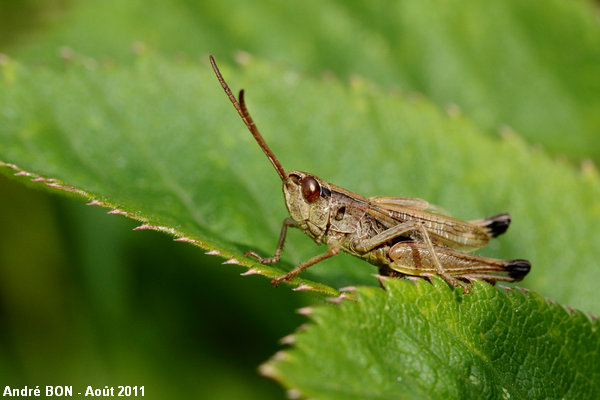
|
I am rather used to observing green-coloured Meadow Grasshoppers. Here is one which is brown. |
| [To know more about the Meadow Grasshopper] [Next picture] [Previous picture] [Top] |
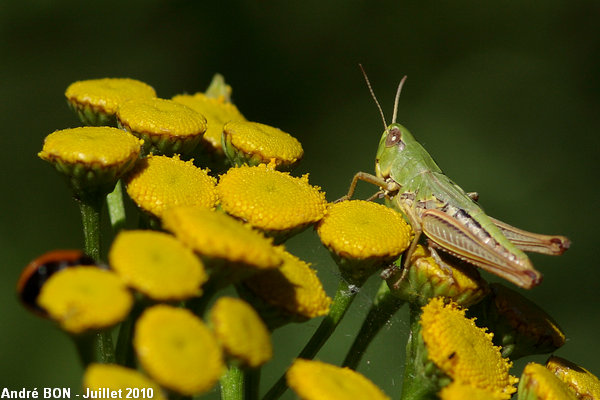
|
Telling grasshopper species apart is a difficult task for an amateur like me. However you need to practice because experience is the better way to improve your skills. This one has almost straight pronotal side-keels and black knees. I do not think that it is already at the adult stage. I am not 100% sure of this identification. |
| [To know more about the Meadow Grasshopper] [Next picture] [Previous picture] [Top] |
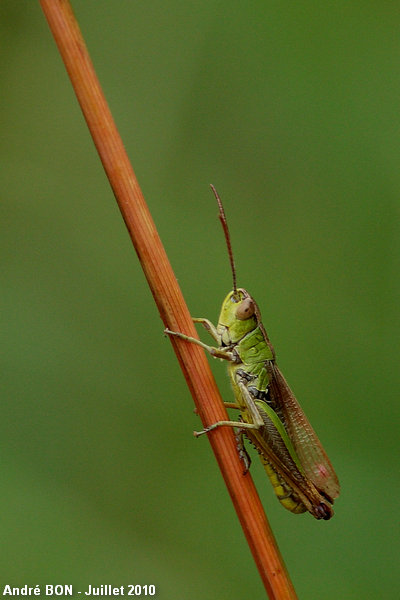
|
The length of the elytra (tegmen) indicates a male. The stigma is rather close from the tip of the tegmen. |
| [To know more about the Meadow Grasshopper] [Next picture] [Previous picture] [Top] |
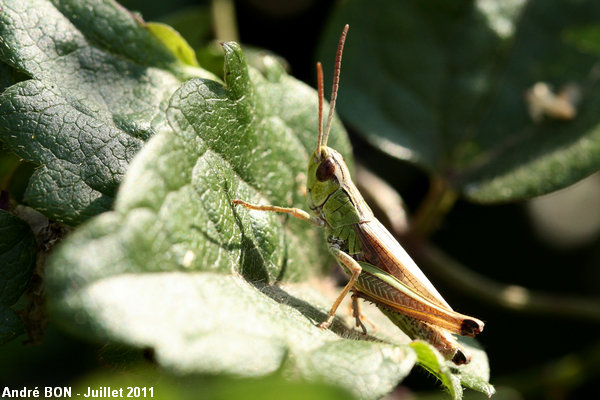
|
The side-keels on the pronotum are almost straight. The knees are black. You cannot see the stigma but you can easily guess that it is close to the tip of the tegmen which is hidden on a short length. |
| [To know more about the Meadow Grasshopper] [Previous picture] [Top] |
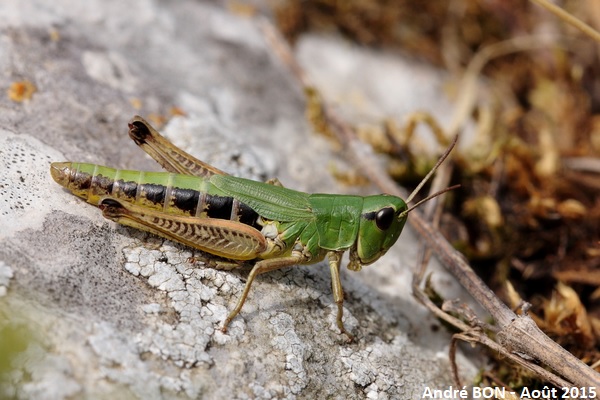
|
The length of the tegmen indicates one female here. |